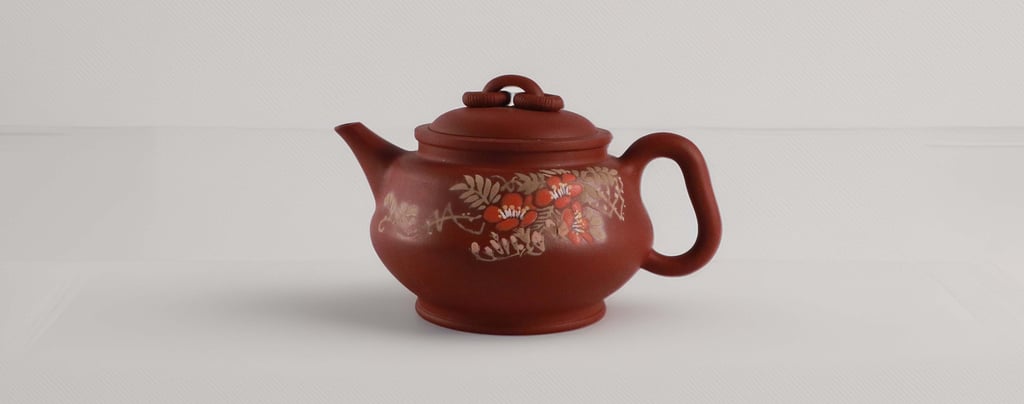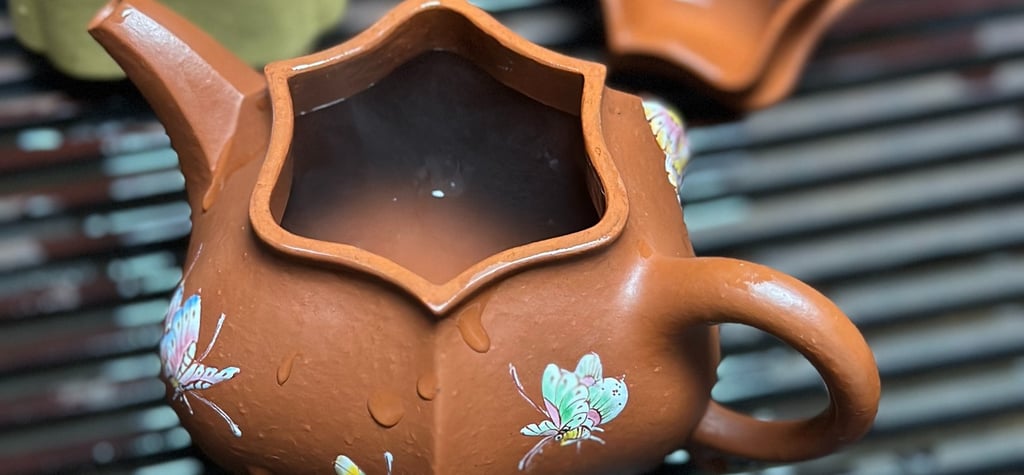An Analysis of the Art of Clay Painting on Yixing Teapots
Explore the art of clay painting on Yixing teapots, where intricate, nature-inspired designs blend tradition and craftsmanship. This technique, rooted in Chinese tea culture, enhances the teapot’s beauty, making it not just functional, but a cultural and artistic treasure.
YIXING TEAPOTS
If you’ve ever wondered why Yixing teapots are so highly prized, you’re not alone. Is it the clay? The craftsmanship? Or maybe the intricate designs? The answer is: all of the above. But today, we’re zeroing in on something truly special—the clay painting (泥绘) art form.
This isn’t just decoration; it’s centuries of culture, art, and craftsmanship fused into one teapot. And when you understand it, every sip of tea feels a little richer.
Let’s break it down.
Exploring the Art of Clay Painting on Yixing Teapots
The Simplicity of Yixing Clay Painting
First things first: clay painting on Yixing teapots isn’t just about pretty patterns. Its roots go way back, with traces of painted pottery found as early as the Yangshao culture in ancient China. Fast-forward to the Ming and Qing dynasties, and this art form really started to shine.
Here’s how it works: skilled artisans apply coloured clay onto the soft, damp body of a Yixing teapot. Think flowers, birds, landscapes—each design telling a story. Then, the teapot gets fired at high temperatures, locking in those designs permanently.
But what makes it special? It’s the understated elegance. There’s no over-the-top flashiness here—just pure, rustic charm that connects with nature and the quiet beauty of tea culture.
In short: Simple. Elegant. Timeless.


Key Considerations in Clay Painting Creation
Here’s the thing—they make it look easy, but it’s not.
When applying clay paintings, the moisture levels of both the teapot body and the coloured clay must be perfectly balanced. Get it wrong, and the design could peel off after firing.
Then there’s the design itself. The painting needs to complement the shape and flow of the teapot. If the art doesn’t match the pot’s form, the final result feels… off.
And finally, this isn’t just technical skill. Artists need a deep cultural and artistic understanding to create designs that not only look beautiful but feel meaningful.
Bottom line: it’s an art and a science.
The Art of Appreciation and the Role of Tea Culture
Drinking tea isn’t just about the tea—it’s about the experience.
In Chinese tea culture, every element matters: the tea leaves, the water temperature, the teapot, and yes—the design on that teapot.
A Yixing teapot with clay painting adds another layer to this ritual. The intricate designs, often inspired by nature—mountains, rivers, moonlight—create a sense of calm and reflection.
When you pour tea from one of these teapots, it’s not just a drink. It’s a moment.
These aren’t just pots—they’re storytellers, mood-setters, and companions in quiet moments.
Conclusion
At the end of the day, Yixing teapots with clay paintings aren’t just about tea. They’re about heritage, art, and a connection to something deeper.
From their roots in ancient China to their place in modern tea culture, these teapots remain timeless. But here’s the thing: while tradition keeps them grounded, innovation ensures they stay relevant.
If you’ve ever been curious about owning one—or just want to learn more—take that next step. These teapots are more than just tools; they’re pieces of art that tell a story with every pour.
FAQs About Yixing Teapots and Clay Painting
Q: What makes Yixing clay so special?
A: It’s the unique mineral composition of the clay, which enhances both the tea’s flavour and the teapot’s durability.
Q: Can clay painting designs fade over time?
A: No, because they’re fired into the clay, making them permanent.
Q: Are Yixing teapots worth the investment?
A: Absolutely. Beyond functionality, they’re pieces of cultural heritage and art.
Q: How do I care for my Yixing teapot?
A: Use it exclusively for one type of tea, clean gently with water (no soap), and let it air dry.
In short: Yixing teapots aren’t just tools—they’re treasures.


